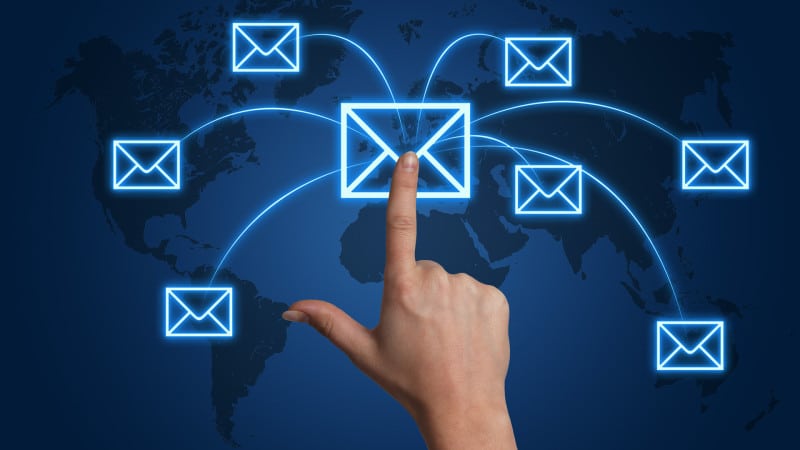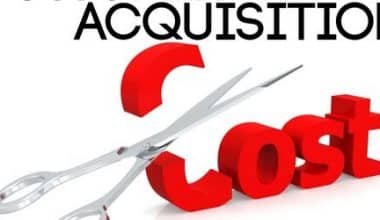Any small business’ marketing strategy must include email marketing. Building an efficient email marketing list for your company is the first step in getting started with email marketing. Fortunately, building a great email list is simple and straightforward. This course will teach you how to collect your users’ email addresses and provide you with advice on how to persuade more people to sign up to receive emails from you.
What Is An Email List?
To get started with email marketing, the first thing you’ll need as a marketer is a list of email addresses to which you may send emails.
This list of emails usually contains people who have given you permission to send them emails.
Because these are the persons who have subscribed, this list is often known as the subscribers’ list.
What Are the Benefits of Maintaining an Email Marketing List?
Because email marketing is one of the most efficient methods of marketing, having an email list can help you in a variety of ways.
Among these advantages are:
#1. You Have Direct Communication Like No Other Network
Building an email list is crucial since it allows you to engage directly with your audience.
Because they have subscribed, you can email them and pique their interest in your content. As a result, make the most of your emailing list.
#2. Reduced Lead Costs
These mailing lists do not require a large investment, making them a far more cost-effective form of marketing for firms.
Email marketing is inexpensive, making it an excellent choice if you’re searching for a low-cost marketing strategy.
The email content, on the other hand, must be effective. You may need to increase your budget slightly to hire a professional copywriter for this.
#3. You Can Reach A Larger Audience
Without a question, social media marketing is becoming more popular in the marketing sector.
However, when it comes to reaching out to real audiences and a wider audience segment who would be interested in your goods, emailing is possibly the most effective marketing strategy.
This is because it allows you to reach a broader audience.
There may still be people who do not have social media accounts, but everyone has an email address, as we all know that even setting up your smartphone requires an email address.
#4. You spread by word of mouth.
When a consumer informs someone about your brand or product, your business grows in popularity and recognition. This positive word of mouth can assist you in gaining more subscribers.
People on your email list are likely to be interested in your work.
As a result, if they enjoy what you have to offer, there is a good chance they will tell others in their group about it.
Tips To Build Your Marketing Email List
Email lists are real, confirmed email addresses from your website’s users and visitors. Collecting emails for marketing and outreach is a great method to share information about your organization while also having the ability to construct personalized messages based on the page or place where a user first connected with your sign-up option. Important considerations to help build this list are listed below.
#1. Have a compelling call-to-action (CTA)
The CTA persuades users to take action on your content. In this instance, you should create a powerful CTA that encourages users to input a real email address that they routinely use. You can promote your products and services directly to them using this information.
With a poor or non-existent CTA, the visitor finds it difficult to engage with you. This results in a missed opportunity to participate. Create a CTA that will pique their interest in entering their email address.
#2. Customize What You Can
Personal connections are always preferable to generic appeals. Carefully constructed “pop-up” advertising, when combined with a well-worded CTA, can have a high conversion and engagement rate if properly placed on your webpage. Including an “opt-in” form in your navigation or footer is another subtle, albeit relatively successful, the technique to generate new email leads. Another excellent idea is to provide unique content or coupons to individuals who give their addresses.
#3. Make Use of Several Social Media Platforms
To build email list profiles that will help you to extend opportunities, choose the social media networks that best fit your demographic. This method may need some trial and error, but having multiple social media accounts allows you to discover which ones offer the best fit for the people you want to contact. You may wish to include options for email updates and CTA statements on your page, as well as surveys, forms, and support links.
Every month, Instagram has over one billion active users. Instagram, known for its high engagement rate and tradition of influencer marketing, also encourages its users to interact with company profiles and apps. In your Instagram bio, you might mention your newsletter or include links to your website. Consider holding a contest or giveaway on Instagram. Make good use of Instagram Stories as well.
TikTok
TikTok’s popularity has skyrocketed in the last two years. TikTok user growth is particularly significant among the Gen Z and Millennial demographics. As TikTok continues to grow and overtake Google as the most popular website, this platform, with its well-developed algorithm, is well worth considering if you want to reach the right users at the right time and build followers while gathering email addresses. Use TikTok’s Lead Generation and lead magnets, go live, and provide opportunities for interaction.
Youtube
Influencers and marketers have long recognized YouTube’s value as a social media resource. Encourage visitors to subscribe to your email list as you put up a video page and add fresh material. Add a link to the webpage that collects email addresses from users and advises visitors to your YouTube page that if they enter their email address, you will be able to propose other videos from playlists you have created. Include a video to greet visitors to your page. Make adverts promoting your website or email list. Comment on other videos as well.
Facebook ads and profiles have long been used to build email addresses for businesses. The Facebook advertisements allow you to target a highly particular group and convert leads into loyal, long-term consumers. E-commerce businesses frequently utilize Facebook ads to build email lists that are closely aligned with the demographics they want to reach.
#4. Provide Incentives
Offer incentives on the platforms you use in exchange for visitors consenting to share a verified email address. Coupons, discounts, free things, and membership in a loyalty program are all possibilities. A gamification option, such as offering customers a “free spin” to select the discount, could be included in a deal.
#5. Keeping track of your progress
After you’ve published your pop-up form and Facebook ad, keep an eye on your reports to see how many new people have joined your email list. Once you’ve established a baseline, experiment with different messaging, timing, user experience, and other variables to see how they affect your conversion rate.
Why You Shouldn’t Buy an Email Marketing List
- You will be in violation of GDPR consent rules.
- Reputable email marketing firms do not allow you to send emails to lists that you have purchased.
- Good email address lists do not come cheap.
- People on a purchased or rented list do not know who you are.
- Your email deliverability and IP reputation will suffer as a result.
- You have the potential to be irritating.
- You may be penalized by your email service provider.
Substitutes for Paid Email Marketing List
#1. Switch from outbound to inbound marketing.
Purchasing email lists is another type of outbound marketing – it is the means of sending messages to potential customers. It is not only expensive, but it also does not guarantee a higher ROI.
When you switch to an inbound marketing approach, you reposition your company to build brand awareness and customer interactions through content creation and social media methods.
#2. Implement lead generation efforts.
Lead generation is the process of attracting prospects and cultivating their interests in order to convert them into customers. This can be accomplished with efficient marketing efforts that include compelling call-to-action.
Examples of lead generation campaigns include:
- Sharing blog posts with useful information
- Using social media to promote product offerings
- Offering free product samples or vouchers that direct visitors to your landing page
- With our next point in mind, your company can become creative with campaigns to better engage your audience.
#3. Demonstrate thought leadership in your material.
You have the potential to demonstrate thought leadership through the content your company provides to an audience. In order to build trust and reputation in your sector, content marketing uses this strategy.
To become a thought leader, your company must demonstrate brand usefulness through instructive content such as tutorials, listicles, and other articles that assist your target audience in learning something new.
If you wish to employ both email marketing and these alternatives, keep reading to find out how.
The Best Way to Build a Free Opt-In Email Marketing List
Now that you’ve studied a few methods for acquiring email lists, let’s look at the third approach mentioned earlier in this post — the opt-in method.
Creating your own list of email contacts who have opted in to receive content from you does more than only comply with regulatory requirements and safeguard your brand’s reputation. It also provides an opportunity to expand your list through meaningful relationships with new consumers. We’ve already written about innovative ways to do this, which you can find here. However, the following are the fundamental best practices that provide a significant return on investment when it comes to regularly expanding an email list.
#1. Create gated assets to offer individuals an incentive to give you their email addresses.
Webinars, booklets, templates, and so on are all examples of long-form, premium content products that individuals may find valuable enough to provide their email addresses for. The more gated assets you have to put behind landing pages, the better – a wider range of material will help you attract a broader audience.
#2. Develop valuable tools.
If ebooks aren’t your thing, try making tools. I don’t recommend choosing between the two, but if you have more development talent than writing talent, this may be a more appealing alternative for you. Some of your website visitors may find these tools useful enough to swap their email addresses for a free demo of the product you created. Then, in your initial email, inquire what their thoughts on the tool. It’s the ideal icebreaker.
For example, we developed Website Grader, which is free to use but requires you to enter your email address. A similar method was taken with more contemporary technology, the Blog Topic Generator.
#3. Publicize those gated assets using your marketing platforms.
Now that you have some gated assets that can harvest email addresses, spend some time making sure the rest of the world knows about them. You have numerous avenues at your disposal, including social media, PPC, and email. None, however, will bring long-term benefits like your blog. Consider the following scenario:
- You publicize your new gated assets by writing on topics relating to the content assets you generated. On each of those blog entries, provide CTAs that connect to the asset’s landing page.
- Assume your blog posts have roughly 100 views each month and your visitor-to-lead conversion rate is about 2%. That means you’d get two leads every month from a single blog post.
- Assume you write 30 blog entries per month. That equates to 60 leads every month, two from each blog article. Continue doing this for a year. Your blogging efforts in the first month will continue to generate leads throughout the year. That means you’ll have 4,680 opt-in contacts every month by the end of a year due to the compounding impacts of blogging, not just 720 (60 leads*12 months).
#4. Create innovative email marketing initiatives.
Most individuals do not consider email to be a conduit for producing leads or contacts. However, because individuals forward beneficial emails to colleagues or friends, merely making forwarding or sharing email content easy for recipients can help you increase your database. Include calls to action in your emails that make sharing an obvious decision for recipients, especially when it comes to your most useful assets.
If you already have a huge database, you are likely to have some contacts that are no longer active. If this is the case, I recommend launching a re-engagement campaign to assist you both clean up your email list and avoid the spam and IP issues I mentioned before, as well as reawaken former contacts who may have forgotten about you but would be excellent sales prospects.
#5. Include social media sharing links in your emails.
Consider including share buttons in your emails so that recipients can forward the emails they enjoyed best to friends and coworkers they believe will enjoy them as well.
Create separate social media buttons that generate pre-written social posts connecting to a webpage version of your email, as well as an “Email to a Friend” button that moves the email into a compose window so your contacts may instantly forward the message. Simply include an opt-in button in your email so that each new viewer can subscribe to more emails from you if they like what they see.
Conclusion
If used correctly, mailing lists can generate substantial revenues. Email marketing allows you to reach a broader audience at a lesser cost while maintaining a more direct and engaging contact with your customers.
It is critical that you build a solid and authentic email list of customers/visitors who are interested in your brand and product.
Once this is accomplished, the following stage is to maintain a regular connection with your potential consumers through lead-generating tactics or by providing them with free material.
They will trust your brand name and love utilizing your items as a result, eventually becoming a repeat customer.
Related Articles
- 10 Tips for Marketing Your SaaS Business Online
- Email Marketing Platforms: Overview, Common Features, Comparisons
- SMALL BUSINESS EMAIL MARKETING: Meaning, Best Email Marketing Software, and Tips
- Best Email Marketing Campaign Examples (+ Detailed Guide)
- EMAIL MARKETING TOOLS FOR SMALL BUSINESS: All You Need To Know & Best 2023 Options






